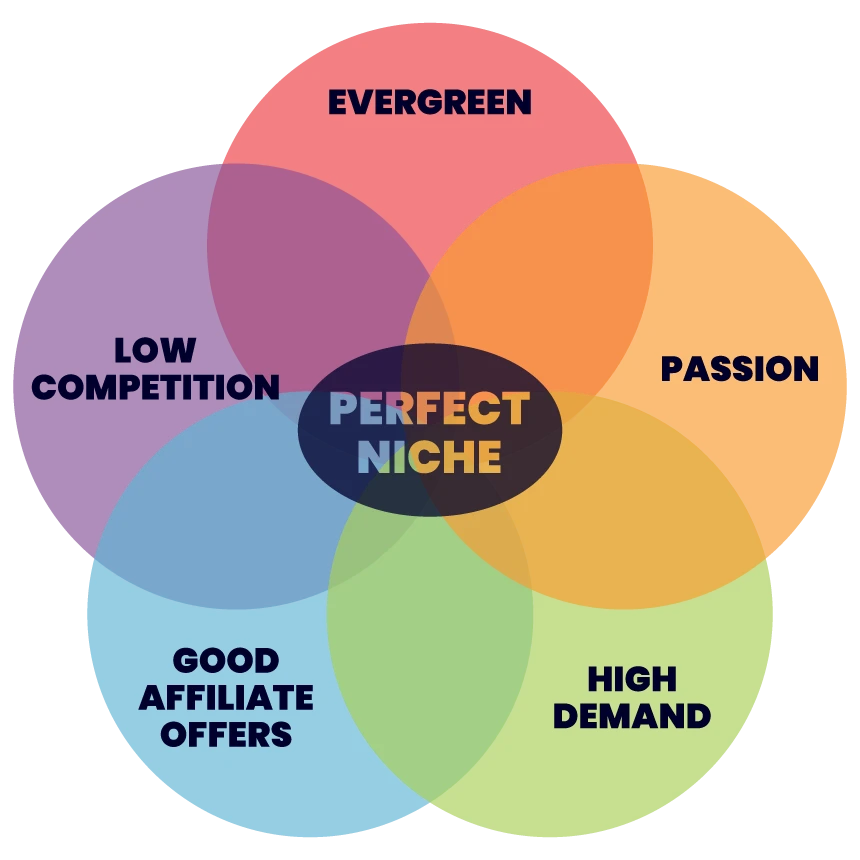8 Common Challenges in Affiliate Marketing and How to Overcome Them

I remember the excitement of launching my first affiliate site. I had everything set up—good content, affiliate links, and high hopes. But after weeks of waiting, nothing happened. No clicks. No sales. Just me, refreshing my dashboard, wondering what went wrong.
Turns out, I wasn’t alone. Many new affiliates start strong but hit roadblocks that make them second-guess everything. Traffic stays low. Conversions don’t happen. A program suddenly slashes commissions. It’s frustrating, and it’s why so many people quit before they ever see results.
Affiliate marketing is profitable, but it’s not easy. When done strategically, it can generate passive income—earning you money even while you sleep. But success doesn’t happen overnight. It takes strategy, testing, and patience.
The key is knowing what to expect.
If you understand the common challenges in affiliate marketing and how to handle them, you’ll be way ahead of those who give up too soon. That’s exactly what this guide covers—the most common affiliate marketing challenges and practical solutions to help you stay on track and succeed.
Key Takeaways
- Choose affiliate programs that match your niche and offer good commissions.
- Focus on SEO, social media, and paid ads to drive traffic.
- Write engaging content with strong CTAs to boost conversions.
- Stand out from the competition with unique, valuable content.
- Follow legal guidelines and disclose affiliate links properly.
- Use tracking tools to monitor performance and optimize strategies.
- Select high-paying programs and diversify income sources for better earnings.
Common Challenges in Affiliate Marketing & How to Overcome Them
1. Finding the Perfect Niche
Picking the right niche is tricky.
Go too broad, and you’re lost in competition. Go too narrow, and nobody’s searching for what you offer.
Some niches look profitable but are oversaturated. Others seem easy but don’t attract buyers. That’s where most beginners get stuck.
How to Overcome It
A good niche hits three things: passion, expertise, and profitability.

If you care about a topic, creating content is easier. If you know it well, you can offer real value. And if it has demand, you can make money.
Start with keyword research. Look for topics people search for but aren’t flooded with massive competitors. Tools like Ahrefs, SEMrush, or Google’s Keyword Planner help with this.
If you are not sure if a niche will work, then test it. Write content, see if it ranks, and check engagement. If people respond, you’re onto something. If not, adjust or pivot early.
A profitable niche is not only about picking a topic but also picking the right audience. Focus on what they need, and you’ll build something that lasts.
Recommended reading: How to Choose the Best Niche for Your Affiliate Marketing Business
2. Finding the Right Affiliate Programs
There are thousands of affiliate programs out there. Choosing the right one isn’t always easy.
Some programs look great on the surface but pay low commissions. Others have poor tracking, meaning you could be losing commissions without even knowing it.
If you pick the wrong program, you might waste months promoting products that barely earn you anything.
How to Overcome It
Start with research. Look for programs that offer high commissions, reliable tracking, and strong brand reputation. If a program has frequent tracking issues or slow payouts, skip it.
Affiliate networks like Amazon Associates, Impact, ShareASale, and CJ Affiliate make things easier by listing hundreds of programs in one place. These platforms also handle payments, so you don’t have to worry about shady companies not paying you.
Most importantly, choose programs that match your niche and audience. If your site is about fitness, promote supplements, workout gear, or training programs—not random electronics. Relevance matters.
Take your time. A well-chosen affiliate program can make all the difference in your success.
Recommended reading: How to Choose the Best Affiliate Programs for More Earnings and Long-Term Growth
3. Driving Consistent Traffic
Getting steady traffic is a struggle for most new affiliates.
SEO takes time. You won’t rank overnight. Paid ads? They can drain your wallet fast if you don’t know what you’re doing.
Without traffic, no clicks. No clicks, no commissions. Simple as that.
How to Overcome It
1. Prioritize SEO for Long-Term Traffic
Organic traffic is free, but it’s a slow grind. The key is Keywords. Find the right ones—low competition, high intent.
Write useful content that actually helps people. Google rewards that. Don’t just chase rankings. Solve problems.
2. Use Social Media the Smart Way
Pick one or two platforms and go all in. Twitter, TikTok, Pinterest. Remember, each works differently. Find where your audience hangs out.
Post consistently. Engage with people. Share valuable content, not just affiliate links. Build trust first.
3. Build an Email List Early
Social media is borrowed traffic and can change at any time. Your email list? That’s yours, no one can take it from you.
Collect emails by offering freebies like a free guide, checklist, or exclusive tips. Get visitors to subscribe. Then, nurture them with helpful emails.
An email list means repeat traffic. And repeat traffic means more chances to make sales.
Here is How to Build a Strong Email List for Your Affiliate Marketing Business
4. Experiment with Paid Traffic (Without Wasting Money)
If you go the paid route, start small. Test different platforms—Google Ads, Facebook, and YouTube.
Track results. Cut what doesn’t work. Scale what does. Paid ads can work, but only if you know your numbers.
No single traffic source is perfect. Combine SEO, social media, and email marketing for the best results. Don’t just wait for traffic. Go get it.
4. Converting Visitors into Buyers
Getting traffic is one thing. Turning that traffic into sales is another.
Many visitors leave without buying. Some don’t trust the recommendation. Others aren’t sure if the product is right for them. Weak content and vague CTAs only make things worse.
How to Fix It
Give people a reason to buy. Don’t just list features—explain why the product solves their problem. Show real benefits in a way that makes sense.
Use strong CTAs. “Click here” is weak. “Get yours now before the price goes up” is better. Make it clear and urgent.
Test different approaches. Try changing headlines, button colors, or product descriptions. Small tweaks can make a big difference.
People need a little push to buy. Give them the right nudge, and conversions will follow.
5. Dealing with Competition
Affiliate marketing is crowded. It’s a competitive field right now. If you’re in a popular niche, you’re up against big sites with massive budgets. They rank higher, get more traffic, and seem impossible to beat. But that doesn’t mean you can’t win.
How to Overcome It
First, stop chasing the same keywords as everyone else. Find gaps in the market. Look for topics the big players overlook—long-tail keywords, niche subtopics, or fresh trends.
Next, build a loyal audience. People follow those they trust. Add personality to your content. Share insights, real opinions, and honest recommendations. Readers come back when they feel connected.
Content quality also matters. Generic product reviews won’t cut it. Go deeper—compare products, share pros and cons, and include real-world use cases. Help people make informed decisions, not just click links.
And don’t rely only on Google. Use YouTube, email, and social media to create multiple traffic sources. The less dependent you are on rankings, the better.
Affiliate marketing is not about outranking competitors. It’s about standing out. Focus on what makes you different, and the right audience will find you.
6. Compliance and Legal Issues
Affiliate marketing comes with rules, and ignoring them can get you banned—or worse, fined. The FTC requires full transparency, and affiliate programs have their own strict policies. If you don’t follow them, you risk losing commissions or even your account.
How to Overcome It
Always disclose affiliate links. A simple “This post contains affiliate links. I may earn a commission at no extra cost to you.” does the job. Place it where readers will see it, like at the top of your content.
Like this…

Read the terms of every affiliate program you join. Some don’t allow bidding on brand names, using certain words in ads, or sending direct affiliate links via email. Know the rules before you promote.
Stay updated on legal changes. Regulations shift, and what’s allowed today might not be tomorrow. Follow industry news, check FTC guidelines, and adjust as needed.
Following these steps keeps you compliant and protects your income. It’s not just about following rules—it’s about building trust with your audience.
Recommended reading: How to Disclose Affiliate Links Transparently and Build Loyal Audiences
7. Managing Affiliate Links and Tracking Performance
Handling multiple affiliate links can get messy fast.
Without tracking, you have no idea which links make money and which don’t. That means lost earnings and wasted effort.
How to Overcome It
Use a link management plugin like Pretty Links or ThirstyAffiliates. These tools organize your links, shorten URLs, and track clicks.
Check affiliate reports regularly. Find out which content drives the most sales and which links aren’t performing.
Improve weak campaigns by testing different placements, calls to action, or product alternatives. Scale what’s already working.
Staying Compliant
Always disclose affiliate links. Readers appreciate honesty, and it keeps you within legal guidelines.
Know the rules of every affiliate program you join. Some have strict policies on link placement and disclosures.
Stay updated on legal requirements in your country. Some regions have specific guidelines on how affiliate marketing should be disclosed.
Tracking links and following the rules isn’t just about staying organized—it’s about making sure you get paid and stay in the game long-term.
8. Low Commission Rates and Payment Issues
Some affiliate programs pay so little that it barely feels worth the effort. You promote, get clicks, and even make sales—yet the commissions are disappointing.
Then there’s the waiting game. Many programs have high payout thresholds or slow payment cycles. You could be sitting on earnings for months before seeing a single dollar.
How to Overcome It
Look for high-ticket affiliate programs. Promoting one sale at $100 commission is better than ten sales at $10 each.
Recurring commissions are another solid option. Instead of one-time payouts, these programs pay you monthly as long as the customer stays subscribed.
Don’t rely on just one program. Spread your risk by promoting multiple products. If one drops its rates or delays payments, you still have other income sources.
Finally, check the payout terms before signing up. Choose programs with reasonable thresholds, reliable payment options, and a history of paying on time. No commission is worth chasing if you can’t get paid.
Conclusion
Affiliate marketing isn’t easy. The challenges are real—picking the right niche, getting traffic, and dealing with low conversions. But they aren’t roadblocks. They’re just hurdles you need to jump.
The good news? There’s a way around every single one. Choose a niche with demand but less competition. Focus on organic traffic. Write content that actually helps people. Track what works, drop what doesn’t, and keep improving.
Success won’t happen overnight. It takes consistency, patience, and a lot of testing. But if you stick with it, the results will come.
Want to skip the trial and error? Join my free email course and learn the exact steps to build a profitable affiliate business—without wasting months on mistakes.
Frequently Asked Questions
What are the biggest challenges in affiliate marketing?
The most common struggles include picking the right niche, getting traffic, low conversions, and dealing with competition. Many beginners also struggle with SEO, content creation, and choosing the best affiliate programs.
How long does it take to see results in affiliate marketing?
It depends on your strategy. If you’re relying on SEO, it can take 3–6 months to gain traction. Paid ads can bring faster results, but they require a budget. The key is consistency—keep testing and improving.
Why isn’t my affiliate site getting traffic?
Low traffic usually comes from poor keyword research, weak SEO, or lack of promotion. Focus on long-tail keywords, create high-quality content, and use multiple traffic sources like social media, email, and forums.
How can I increase my affiliate sales?
Write content that solves real problems. Use comparison posts, detailed reviews, and strong CTAs. Build trust by recommending only products you believe in. Also, optimize your pages for conversions—test different headlines, buttons, and layouts.
Is affiliate marketing still profitable in 2025?
Absolutely. More people are shopping online than ever before. The key is staying updated with trends, choosing profitable niches, and adapting to new platforms like TikTok and AI-driven search.






